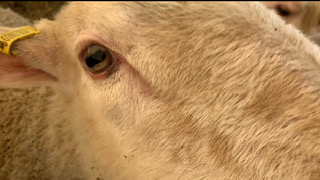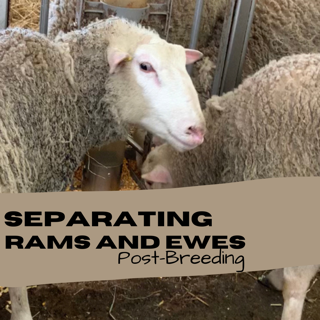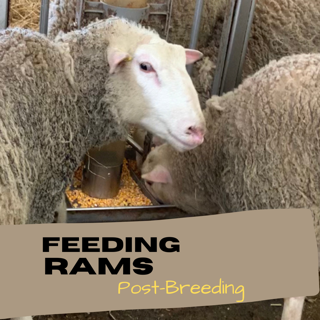The Sheep Eye is Interesting and Impressive
The sheep eye is interesting and impressive and is worthy of understanding; if you are a sheep farmer. Individuals who are just beginning to farm sheep will especially benefit from this understanding. We have discovered a few interesting facts about the sheep eyes since we expanded our farm operation to include sheep.
Understanding the Sheep Eye
If we understand the sheep eye, we can understand how they see. This teaches us how to anticipate how they will behave when we are near them. There are many times that we need to relocate, move or contain an animal. In order to do this without creating a stressful and hazardous environment for us or the flock; we need to understand how they will act as we attempt to get close to them.
How Does their Eye Impact their Behaviour?
The sheep is aware of every change in its environment and its senses are geared to assess such changes with optimum speed and accuracy. [2]
Sheep can see almost completely around themselves, but their sight is most acute in the frontal visual field where the two eyes overlap. [3]
Sheep have rectangular pupils that give them amazing peripheral vision. It’s estimated their field of vision is between 270 and 320 degrees; humans’ average about 155 degrees with depth perception. These are great assets when you’re a prey animal. [1]
The Sheep Eye – Pupil
The pupil is the point in which light enters the eye and results in the mind conjuring an image. The larger the pupil, the more sunlight shines through. The pupil is involuntarily controlled by the iris, which constricts and dilates in order to regulate the amount of light that enters the cornea. [5]
The Sheep Eye – Iris
The iris is the control center for light, controlling how much is let into the eye. When there is an abundance of light the iris adjusts by shrinking, allowing just enough light to be absorbed. Under darker circumstances, however, the iris expands to allow maximum light to be absorbed. Animals whose eyes could adapt to lighting variations could easily and under any circumstances avoid predators, [5]
Pupils also come in types, depending on the purpose it may hold for the animal that contains it. For example, a species of animals that spends a majority of time in the sun usually have eyes with spherical pupils. Those who need be active during all times of day and night are better equipped with pupils which can easily vary or adjust, such as rectangular eyes. [5]

The Pupil Shape
Sheep, Goats, Octopuses and Toads have these rectangular shaped pupils. Typically classified as prey, these animals need to have a defense both day and night. [5]
The Sheep Eye Explained
Humans have binocular vision, focusing both eyes simultaneously to achieve good depth perception and clarity for objects directly in front of them. However humans’ peripheral vision is very limited. [6]
Sheep see the world through a different set of eyes than ours. Sheep have their eyes set on the side of the head. They have a narrow field of binocular vision in front of their head and wide peripheral fields of monocular vision. [6]
The area in the back of the sheep’s head is a blind spot when their head is raised. If a sheep is approached from the rear, a handler can remain undetected visually and have a better chance at catching the animal. [6]
With its head down in a grazing position the sheep can see in all directions; a good defensive adaptation whereby the sheep can see predators’ from all sides while grazing. [6]
Sheep have monocular vision, meaning that their eyes are on the side of their head. Just about every prey animal has monocular vision while predators tend to have binocular vision, where the eyes are on the front of the head with poor a peripheral range. Monocular vision on the other hand, enables prey animals, like sheep, to see in peripheral ranges of over 300°. [4]
This means that sheep can see almost completely around themselves. This enables them to be completely aware of their surroundings. Additionally, being able to keep an eye on the other sheep in their flock while also scanning for danger in the surrounding area. [4]
Fun Fact
100% of all our sheep have BROWN eyes! Check out this stuff in our Video Here and see the eyes for yourself!
Interested in seeing how we herd our sheep flock? Check out a few of these details here.
Sources
[1] https://modernfarmer.com/2017/12/6-facts-sheep-might-not-know/
[2] https://www.newscientist.com/article/mg12617164-100-through-a-sheeps-eye/#ixzz7EvdeMlfR
[3] https://www.newscientist.com/article/mg12617164-100-through-a-sheeps-eye/#ixzz7EvdxMh5l
[4] https://savvyfarmlife.com/what-sheep-can-see/
[5] https://www.science20.com/variety_tap/evolution_rectangular_eye
[6] https://www.sksheep.com/documents/Ex_Understanding_Sheep_Behaviour.pdf





